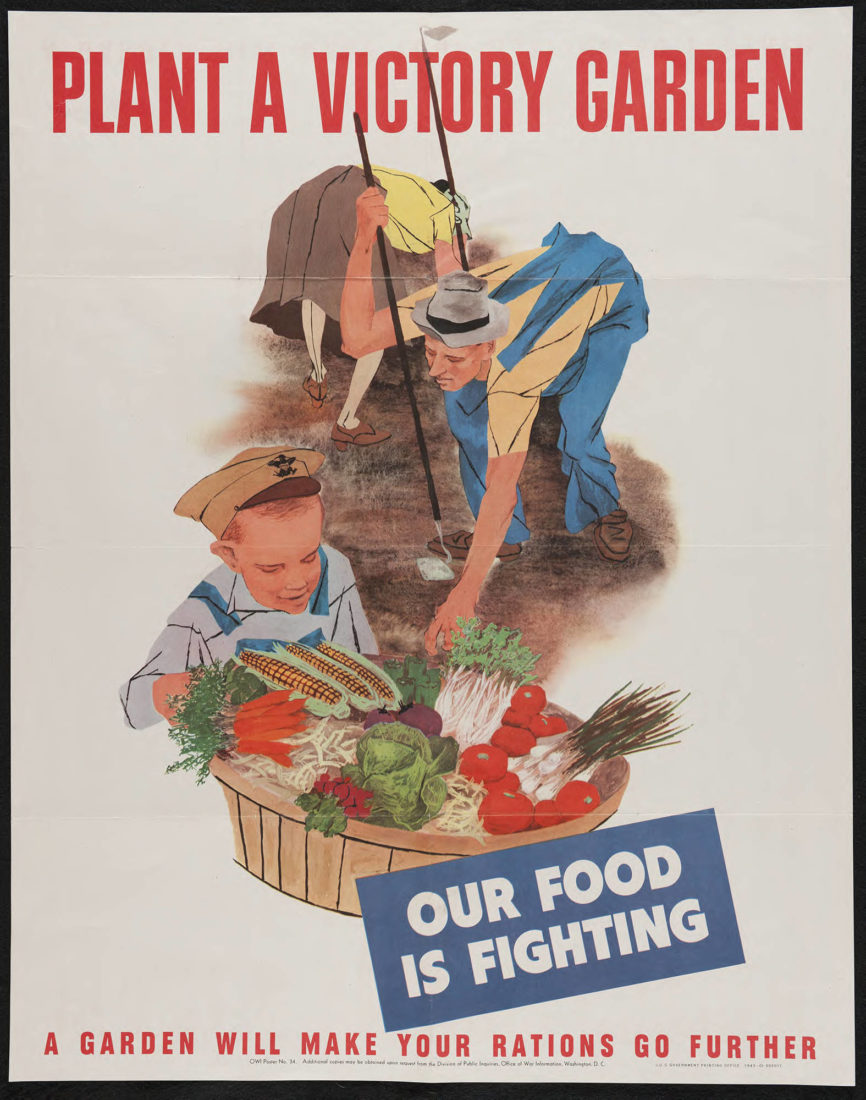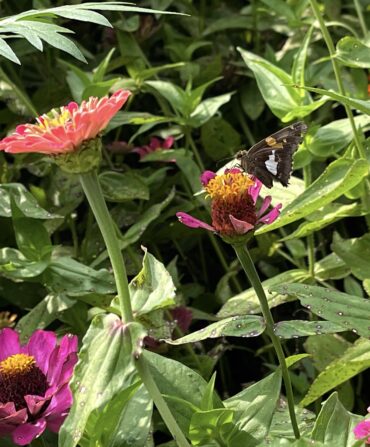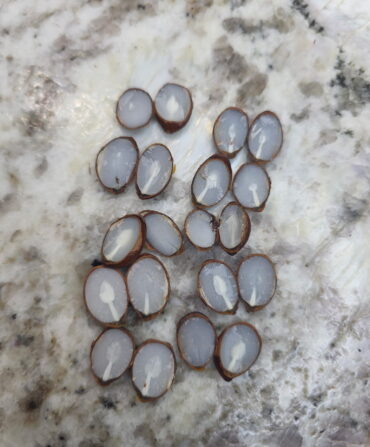While troops deployed across the globe during both World War I and II, Americans on the home front helped by buying war bonds, rationing supplies, and to prevent food shortages, grew their own backyard crops in a movement dubbed “victory gardening.” By 1943, more than forty percent of all fruits and vegetables grown in the United States were harvested at home.
Throughout the following century, victory gardens popped up again and again in times of national and global duress. After 9/11 and during the 2008 recession, online advice groups grew and interest in heirloom seeds sprouted. Now, during this coronavirus pandemic, home gardens are once again thriving.
“A lot of mail-order seed packet companies’ orders have exploded,” says Diane Blazek, executive director of the National Garden Bureau. “Some are seeing two to three times their usual sales because of COVID.”
The South treasures its mementos of victory gardens past: Atlanta History Center’s Cherokee Garden Library, the Tennessee Virtual Archive, and Martha Blakeney Hodges Special Collections at the University of North Carolina Greensboro have all preserved artifacts, including catalogs, posters, garden club records, photographs, how-to guides, and brochures, many of which can be found in their online databases.
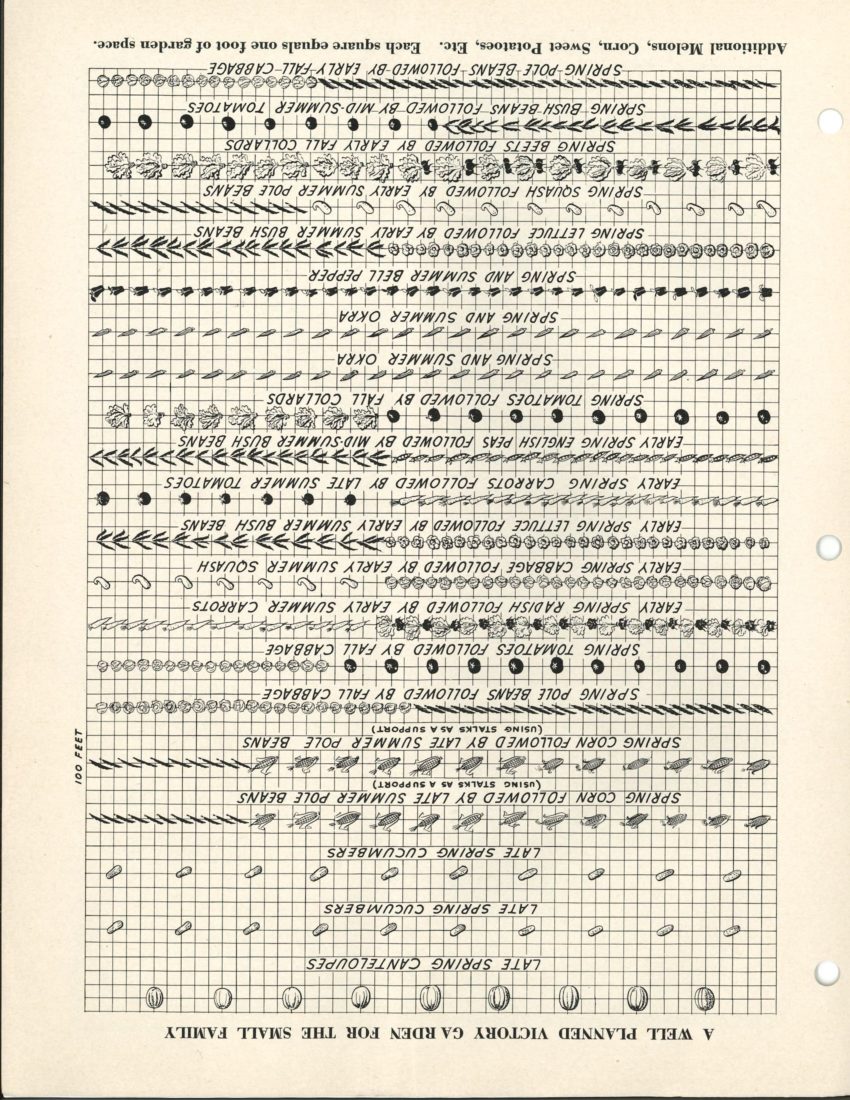
For example, a 1918 seed catalog by H.G. Hastings and Company, an Atlanta-based mail-order seed enterprise, urged Atlantans to create their own War Service Gardens. “These gardens also helped give nourishment to Atlantans when the H1N1 flu pandemic struck the city in October 1918,” says Staci Catron, the director of Cherokee Garden Library.
The library also possesses a collection of newsletters and pamphlets that circulated throughout the state during WWII, including Garden Gateways, the Garden Club of Georgia’s periodical, which used snappy slogans (“Grow More for VICTORY!” and “Food is the Fuel of a Fighting People”) and patriotic essays to encourage home gardeners: “Certainly, it is necessary for us to go ‘all out’ in the production of planes, tanks, guns, and ammunition,” wrote the president of the Men’s Garden Club of Atlanta Donald M. Hastings in a 1942 Garden Gateways. “But remember, the men who man those machines must have good food, plenty of it, and of a varied and balanced character to insure maximum efficiency.”
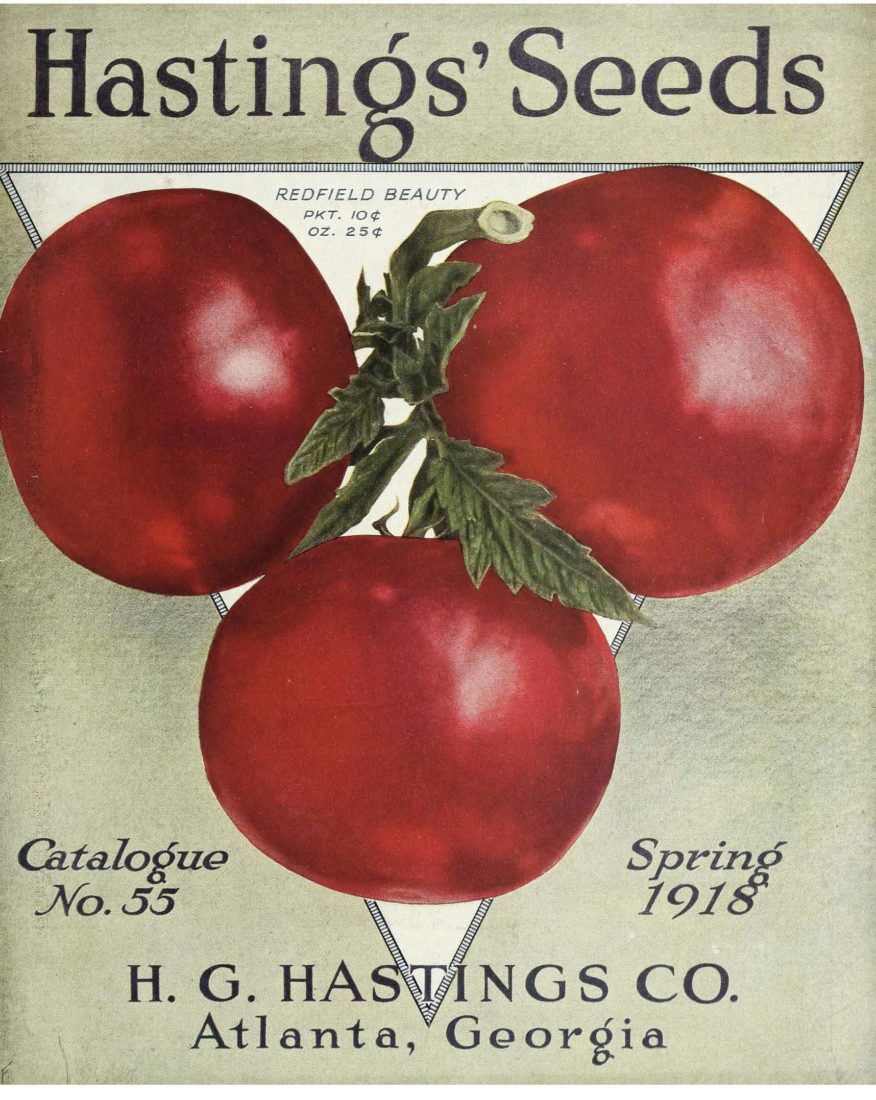
Posters in UNC Greensboro’s collection include colorful depictions of peas, potatoes, carrots, and corn harvested by everyday Americans. Letters and photographs from the era in the Tennessee Virtual Archive also provide a history lesson on the movement and records of people learning to can and preserve homegrown crops. Other materials share practical advice: which turnip varieties are louse resistant; a hose wrapped in burlap is best for watering row crops; and that in Georgia specifically, okra “should not be planted until cotton is being planted,” states one document. “This means the first of May in the latitude of Atlanta, and the first of April in the latitude of Waycross.”
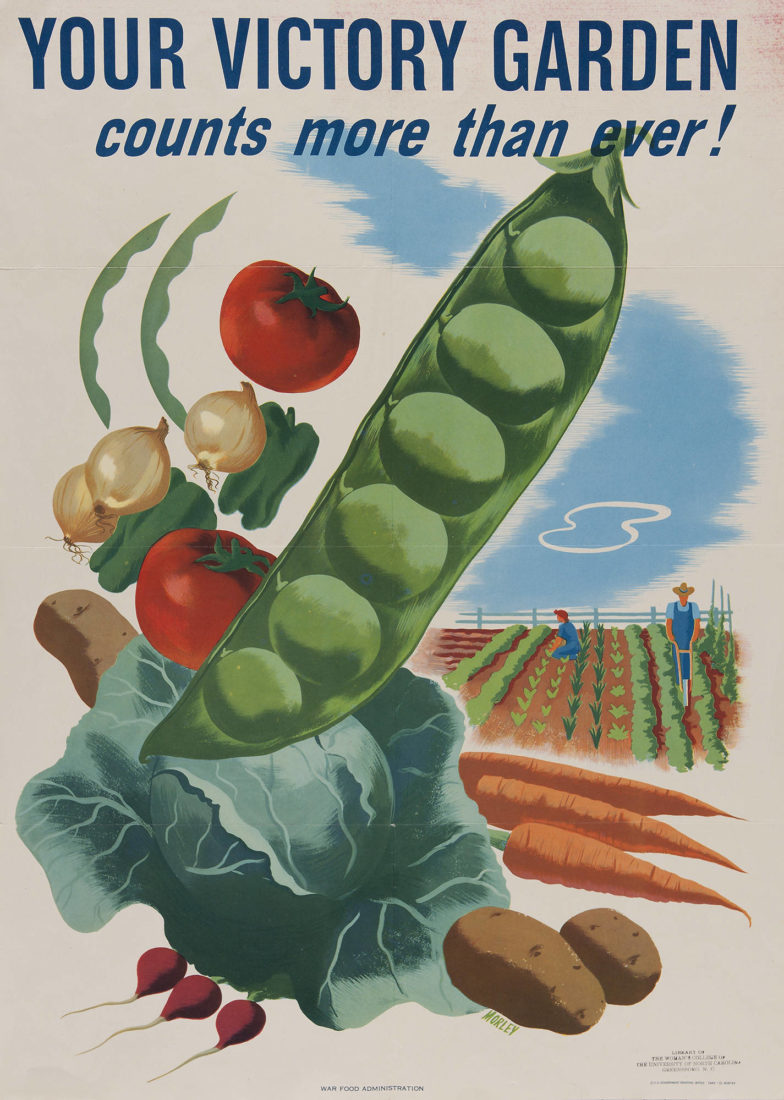
To commemorate the National Garden Bureau’s one hundredth anniversary this year, the organization asked seed exchanges and garden experts to answer questions on its website, moving through the garden crop by crop (What tomato variety thrives best in Florida? How do I grow sweeter watermelons? Why do my pepper leaves look pale?) to create a modern-day victory garden guide for today’s gardeners. “Teaching people to grow their own food has always been a patriotic effort,” Blazek says. “This is a way we can come together in times like this.”


